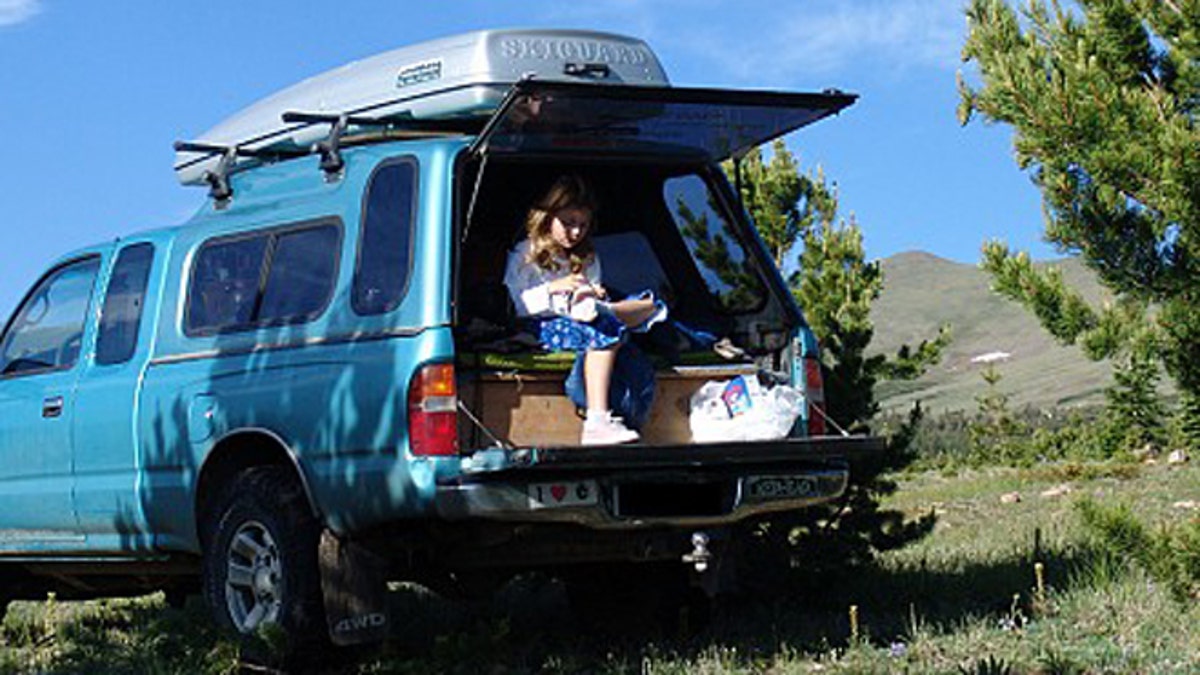
(Kevin Stevens)
Contractor = Pickup truck ...right?
This is pretty true for nearly every fellow contractor I've worked with over the last few years. A few of the exceptions include some that work out of a van, or some lighter-duty painter-types that work out of Subaru wagons. I've been a Toyota Tacoma owner for a long, long time - longer than I've been a remodeling carpenter. Back in those old days we were quite adventurous and would often take some off-road camping adventures. The truck could handle serious terrain, all of our gear and four large dogs. We still get out now and then but now, it mostly serves as my mobile office, mobile shop and rolling hardware store.
I have to admit I have a good handful of tools in my truck at any given time. I have to, to rebuild roofing in Denver. The bulk of these are smaller cordless tools and hand tools. For specific projects I will load up the specialty tools, like my 10" tile saw, the 12" miter saw, one of my compressors, my portable table saw or floor sanding equipment. Each job often involves materials as well. This is where it can get tricky. How can I haul tools and materials? Fortunately most big material jobs are often spread over a few days where supplies and tools can be transported separately. For minor projects I can get by with smart loading and the use of my roof rack. For really big projects there is always my 5 x 8 trailer.
The camper shell of my truck originally kept our camping gear out of the weather and contained the four-legged furry friends on our adventures. When I switched careers the modifications to the truck were pretty necessary and simple. The first modification was the construction of a bed "deck". This allows the simple task of hauling full-size plywood and drywall with out undue manipulations. In a full-size truck the distance between the rear wheel wells is a bit over 4 feet; sheet stock can simply lie in the bed. In a compact truck like mine, I built a frame and deck that rises just above the wheel wells...this allows sheet stock to fit easily.
As an added bonus I have a hinged storage space below that can hide/store other tools and supplies. Initially this met my needs, but as I kept having to move some more common tools in and out frequently I upped the storage with a tool shelf in the camper shell. This tool shelf extends out from the cab about 16" or so and now supports two tool buckets, my corded drill and a few nail guns in their cases and some tool boxes that house my electrical, plumbing and stone tools. This shelf rests on the lip of the camper shell and still allows sheet stock to fit below. With the front corners rounded this shelf can be lifted out when needed. This makes "sleeping" in the camper shell easy and pleasant on our continued adventures. I cut access holes in to the two front corners of the bed deck that can accommodate our 5 gallon water jugs...this keeps 80 odd pounds of sloshing containers from bashing other stuff if the roads gets rough.
On top of my camper shell I have Yakima rack which supports a "ski box", it can used for bikes too when needed, by attaching the bike racks. Conveniently I can carry a slab door in the ski box, or my miter saw stand. Long 12' lumber and trim can be strapped to the cross-bars of the roof rack. If I am only transporting a few sheets of plywood I can still close the rear window of the camper shell, this allows for some protection if the weather is snowy and keeps the loads clean.
Is it perfect? Almost.
This arrangement has been serving me well for nearly a decade now. I have the ability to carry both tools and materials. I even have enough height on my bed deck to carry some smaller appliances and cabinets. Dishwashers, water heaters and cases of tile slide in and out over the carpet of the bed deck. Looking back I can only see one minor improvement that needs to be made to my truck. My roof rack cannot handle heavy cement board siding too well, 12' long hardi-plank tends to dip too much on the ends, wood at 12' is plenty stiff...but the hardi-plank needs more support. I might try using my extension ladder as a support for the next siding load to the cabin.
Kevin Stevens writes for Networx. Get home improvement ideas like this on Networx.